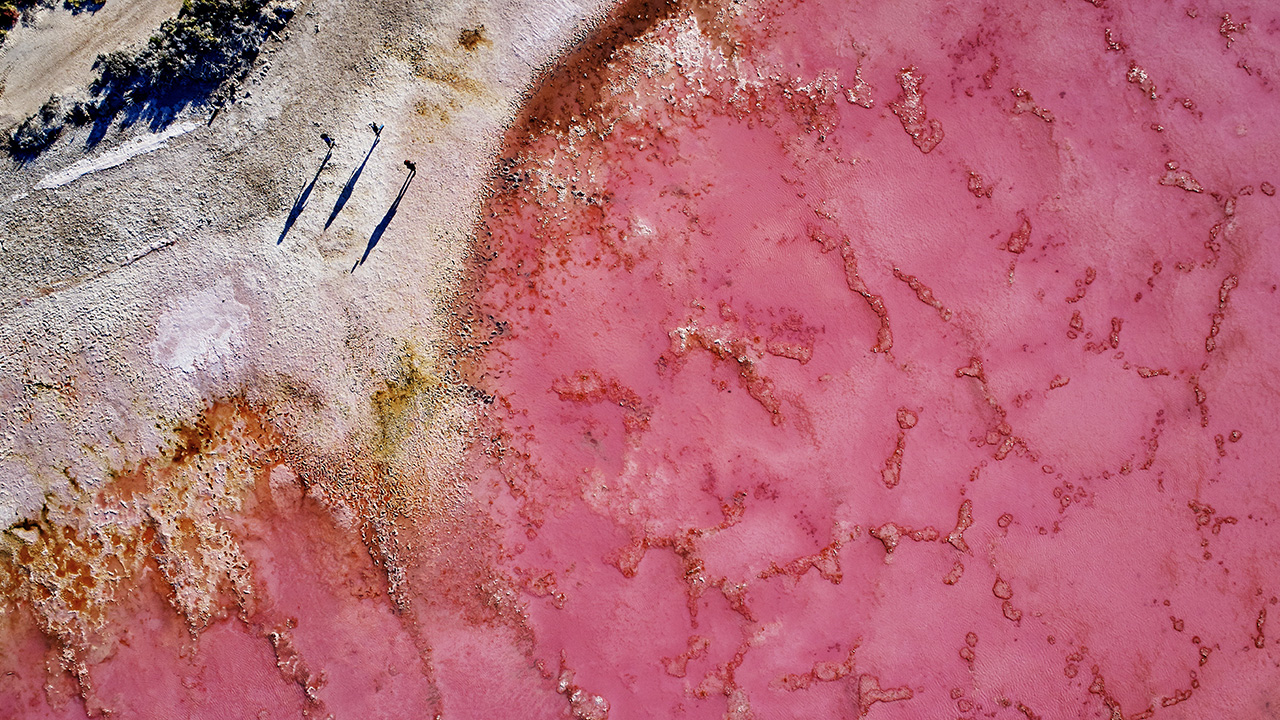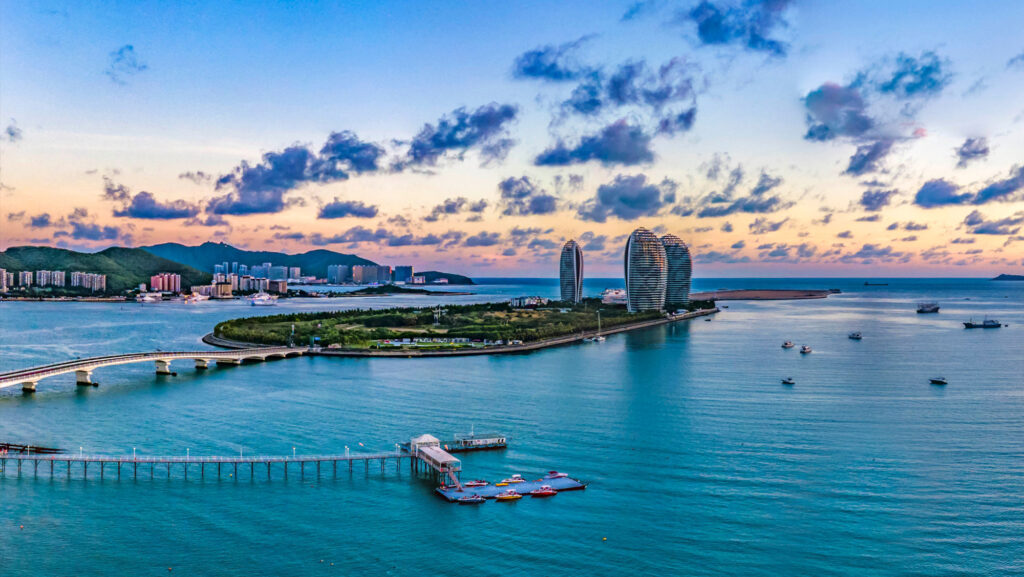Few expressions better capture the euphemistic optimism of tourism stakeholders in 2020 than “staying top of mind.” As a trillion-dollar industry ground to a halt, future-facing marketing campaigns became the best recourse for enduring an unprecedented crisis.
So too with respect to China. Destination marketing organizations (DMOs) watched on, cut off from the world’s largest tourism market as it reopened and began flourishing domestically. Switzerland challenged Chinese tourists to “Dream Now and Travel Later,” Forever Edinburgh shared visitor photographs and memories, and the Tourism Authority of Thailand gifted future vacations via a WeChat game.
For Tourism Australia, staying relevant with its second largest inbound market — one that delivered nearly 1.5 million tourists and $6.4 billion in 2019 — means blending social media campaigns with offline events that harness the power of local influencers.
Australia’s recent 8D mini video series, the first time a tourism body has used enriched sound technology, exemplifies this dual strategy. After creating six destination-specific videos — themed by color, i.e. red for adventurers, magenta for romantics, black for creatives — it promoted them on Chinese video platforms including Tencent Video, Youku, and iQiyi. Next, it hosted a Shanghai luncheon at an upscale Australian restaurant and welcomed 20 Chinese key opinion leaders (KOLs) to immerse their eyes and ears in the country’s distinctive landscapes (and sample some fresh seafood and barbecue).
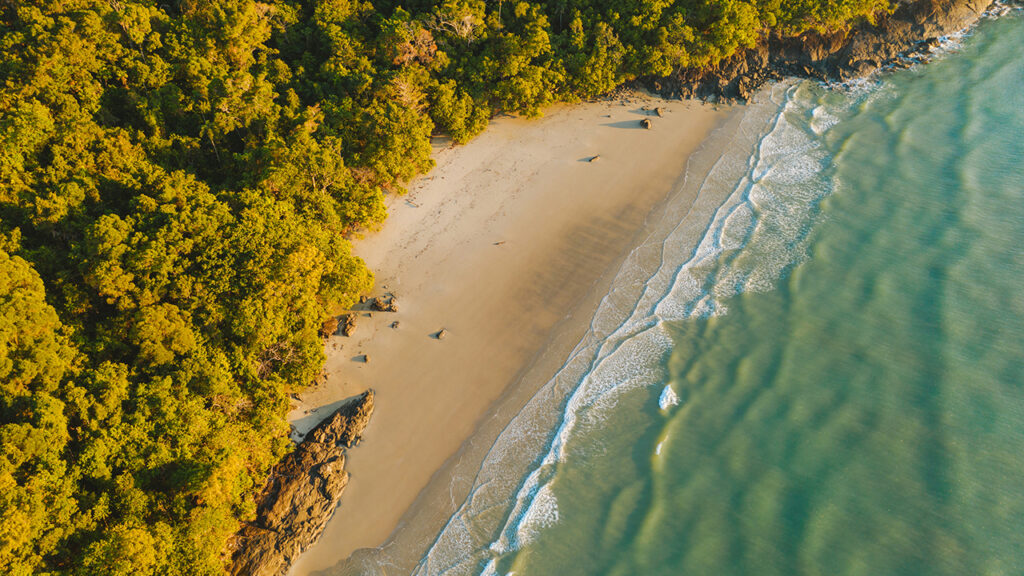
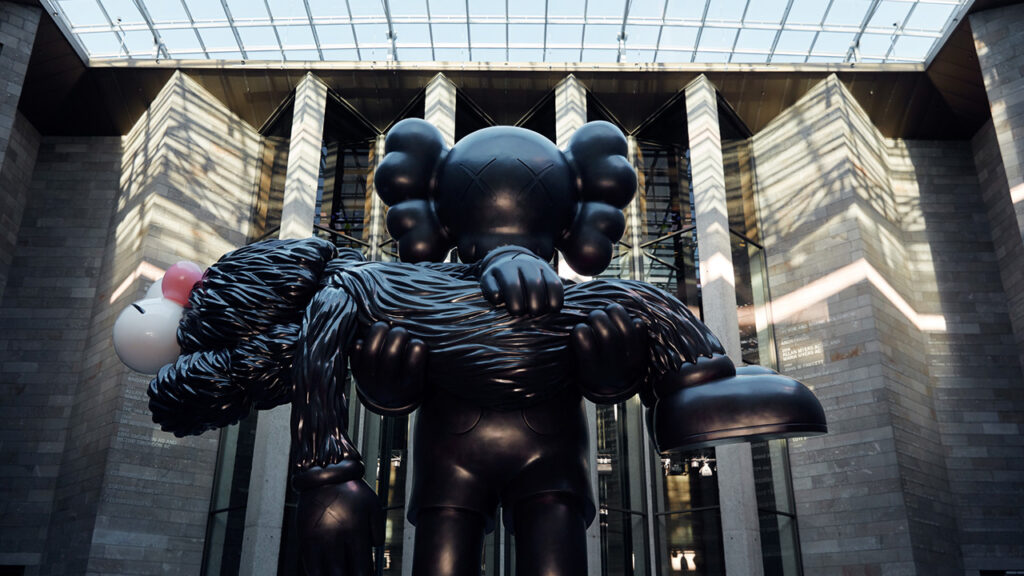
The campaign’s six videos highlight the vibrant hues of Australia’s natural and urban landscapes, including the Daintree Rainforest in Queensland (above) and the National Gallery of Victoria (below). Images: Tourism Australia
Australia in 8D reflected the new priorities of Chinese travelers who emerged out of lockdown eager for open spaces, fresh air, and adventure. Similarly, Tourism Australia is taking a fresh approach to evaluating a campaign’s success. As Andrew Hogg, the Executive General Manager, Eastern Markets and Aviation, Tourism Australia, explains, focus has shifted from visitor arrival data and expenditure to a broader assessment of engagement, content marketing on PR, and performance on digital channels.
Even still, viewership exceeding 57 million on Tourism Australia and participating KOL platforms bodes well for the DMO in 2021. Here, Hogg explains the components making up a successful social campaign and the new focus on video.
Australia in 8D was an innovative campaign. Could you explain the thinking behind it?
Australia is visually one of the most distinctive places on the planet. Our landscapes span the full color spectrum, and color plays a huge role in evoking feelings and emotions. The videos aim to incite excitement and emotion with our audience to keep dreaming and planning their next holiday in Australia. We believe the experience gives travelers a taste of what it’s like to experience Australia from the comfort of home.
How did KOLs help Tourism Australia amplify the campaign?
We expanded our KOL partnerships beyond Weibo and WeChat to Bilibili KOLs for in-depth video content to introduce destination highlights and 8D sound technology. The hope is to introduce the vibrant Australia to more young people through a young people-oriented platform. In terms of performance, we totally received over 57 million video viewership on Tourism Australia-owned and cooperating KOLs’ platforms. [More recently] we invited two Australia-based Chinese KOLs to visit bushfire-impacted regions to encourage travelers, and deliver the key messages of the 8D campaign on Weibo, WeChat, RED, Douyin, and Bilibili.
At a time of travel standstill, how is Tourism Australia assessing the success of campaigns?
Before the pandemic, the key metrics would be market performance, visitor arrivals, nights stayed, and expenditure. In terms of social media followers, viewership and engagement are the key metrics. Our China social platforms currently have over 1.91 million followers, and we’ve received messages from thousands of readers who felt the charm and vibe of Australia through the videos. The parallel campaign of 8D, our user generated content With Love From Aus, received over 36 million impressions among Chinese travelers. All STO [state tourism organizations] in marketing teams announced or reposted the campaign, a great demonstration of our One Voice strategy.
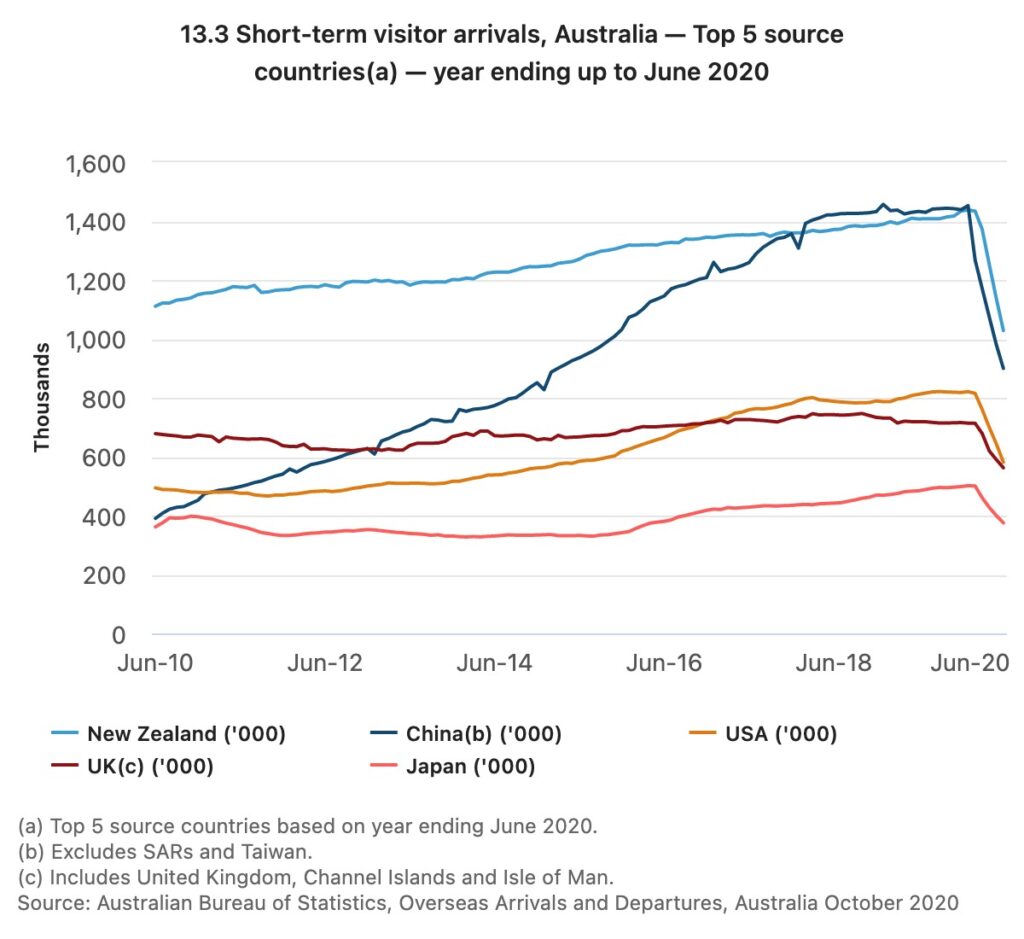
The past year saw a drastic dip in inbound Chinese tourists — from nearly 1.5 million in 2019 to 900,000 in 2020. Image: Australian Bureau of Statistics
Tourism Australia is taking an increasingly video-focused approach to China. Please explain.
Video content is well-received by audiences and we want to pay more attention to rising video platforms in China. We’ve revived a lot of high-quality UGC content with stunning Australian landscapes, particularly short videos; and in 2020, we opened new official accounts on Bilibili and Douyin. The followers of the Douyin official account increased 50 times, reaching 31,200 followers. It’s also about providing visitors the latest destination and industry information, and developing online training livestreaming programs under Aussie Specialist Program for our travel agency partners to show our support.
How else is Tourism Australia helping local tourism stakeholders?
Fundamentally, more events are turning to digital, i.e. livestreaming, virtual exhibitions and online meetings. Tourism Australia is helping local operators seeking virtual solutions: first by regular email blasts and featuring stories in media, but also by providing pitch packs, and introducing virtual tours and experiences already launched, such as experiences by Australia’s iconic museums and galleries. On the industry side, in December, we successfully held Australia Marketplace Online, which brought together 154 Australian sellers and 168 buyers to establish and maintain business relationships.
How is Tourism Australia following up on these campaigns in 2021?
We will keep working on market research to keep track of consumer sentiment. In 2021, the trends predicted to grow are: wide-open and remote destinations deemed safer, travel as a force for good, indigenous experiences on the rise, and local produce taking center stage. Tourism Australia will focus content on the natural environment, unique wildlife, and feel-good travel.

